“What do you wish you knew about Costa Rica before coming here?”

Everyone who lives in Costa Rica, full-time or part-time, knows the quirks and daily realities. We see them from the inside, often forgetting how strange they may seem to newcomers. First-time visitors sometimes react with surprise or confusion when faced with what we consider normal. That contrast becomes clear when friends from colder climates come to visit.
Online platforms—travel blogs, Reddit threads, and Facebook posts—offer blunt truths. They wake up unprepared tourists with honest answers to one key question: “What do you wish you knew before coming to Costa Rica?” These stories help bridge the gap between expectation and experience.
1 – I Wish I knew How EXPENSIVE Costa Rica REALLY Is!
Costa Rica often surprises visitors with its high prices. Despite being a small country with modest infrastructure, it attracts wealthy tourists and expats. This demand drives up costs, especially in tourism-related goods and services. Many travelers expect it to be affordable but find prices higher than in the U.S. or Europe.
Items like food, toiletries, and household basics can cost more than expected. Imported goods face steep taxes, and local production doesn’t always meet demand. Restaurants in tourist zones often charge premium rates. Even basic groceries sometimes shock newcomers with their price tags.

Eating Out
Restaurant meals top the list of price shocks for visitors in Costa Rica. High-end eateries have multiplied rapidly, especially in culturally diverse areas like Costa Ballena. You’ll find French bistros, Tex-Mex, Mediterranean kitchens, Italian trattorias, Spanish restaurants, fusion spots, Chinese food, American-style diners, and traditional Costa Rican sodas—all within a short drive.
But variety comes with a cost. Many of these restaurants charge premium prices, often matching or exceeding those in the U.S. or Europe. Even fast food chains like McDonald’s or KFC stick to their western pricing.

To keep food costs low in Costa Rica, eat one daily meal at a local soda or family-run restaurant. These spots serve hearty, traditional dishes at budget-friendly prices. You’ll enjoy home-cooked meals like casado, gallo pinto, or arroz con pollo, often prepared just steps from the dining area.
Many sodas operate within family homes, offering a relaxed, authentic experience. You’ll share space with locals, hear neighborhood stories, and taste recipes passed down through generations. It’s a great way to support small businesses and connect with Costa Rican culture.
Keep in mind—alcoholic drinks are rarely served at sodas. Stick to fresh juices, coffee, or soft drinks while soaking in the local charm


Groceries
Grocery staples in Costa Rica—like meat, milk, cheese, eggs, and butter—can be surprisingly expensive. Imported specialty items and brand-name snacks, such as potato chips, often carry steep price tags due to high import taxes and limited supply.
To save money, shop outside tourist zones. Local supermarkets, neighborhood stores, and roadside stalls offer better deals on fresh produce, seafood, and pantry basics. Farmers markets also provide seasonal fruits and vegetables at lower prices. While these options may pose minor food safety risks, many locals rely on them daily with no issue.
Even in tourist-heavy supermarkets, you can sometimes find discounted local brands. Look for store-label products or regional alternatives to stretch your budget without sacrificing quality
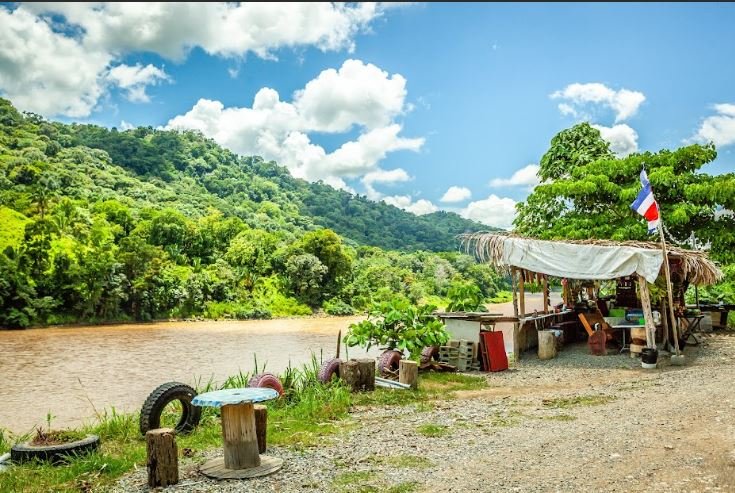
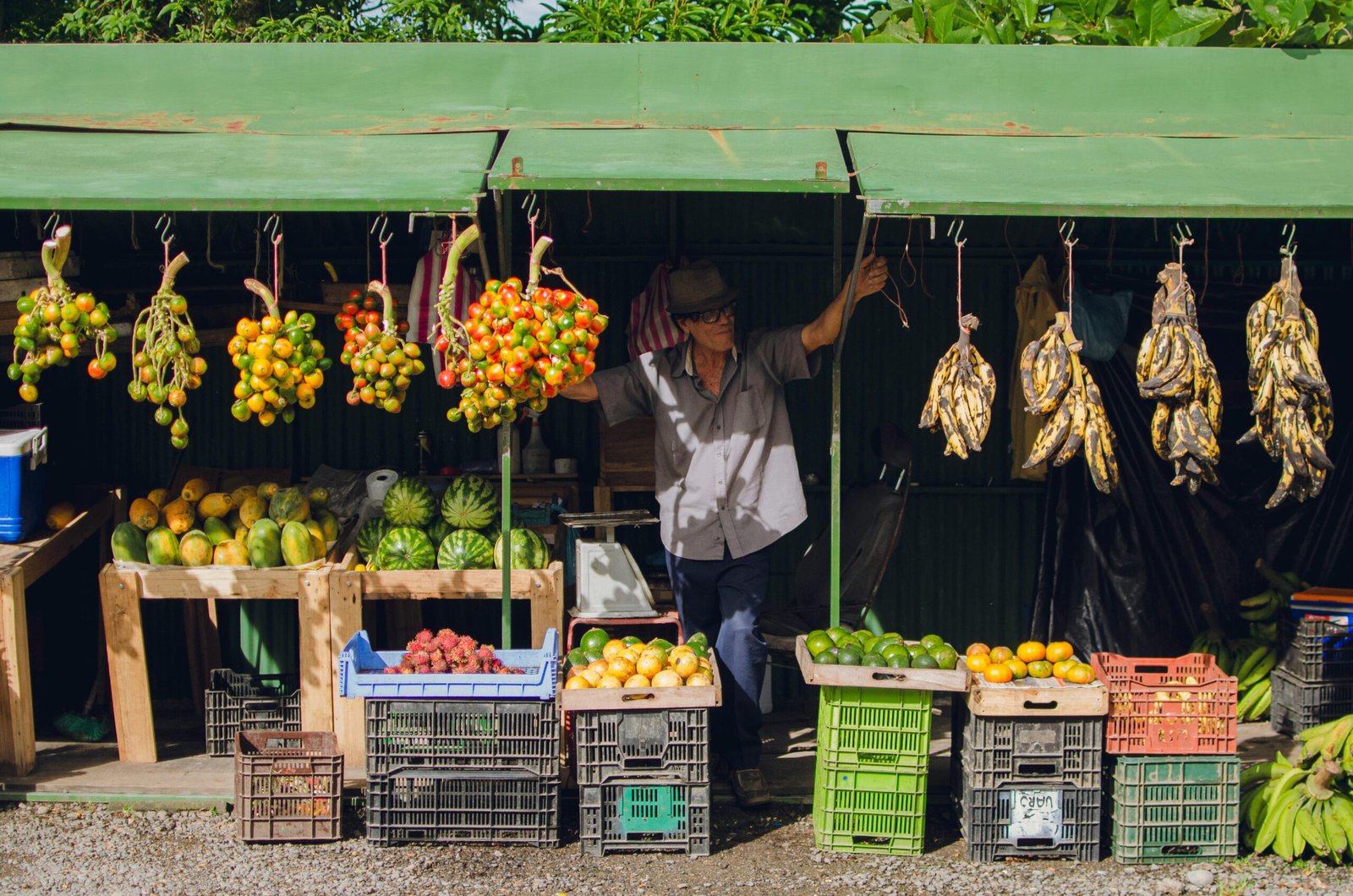
A lot of others stuff too!
Tours & excursions, National Park entrance fees, accommodation in tourist areas, and the cost of souvenirs were also mentioned as being much more expensive than expected.
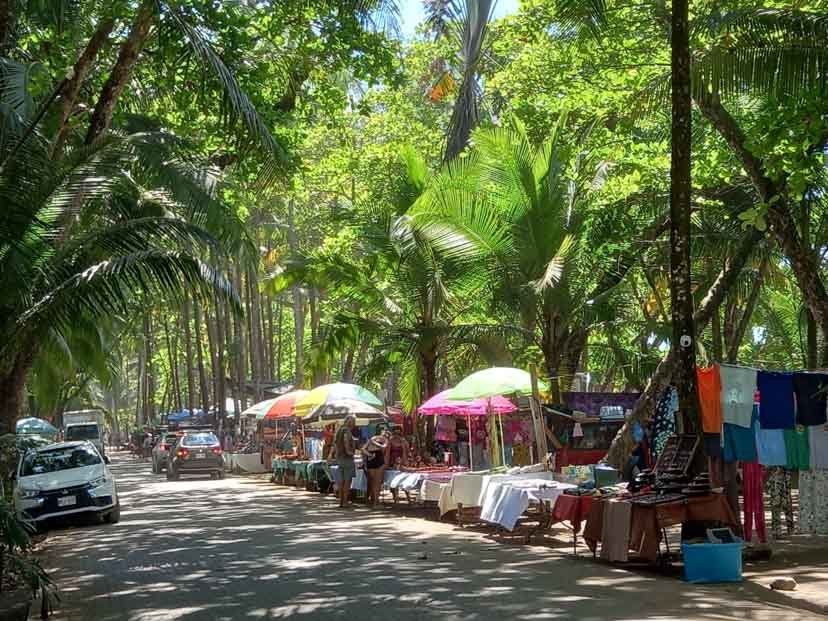
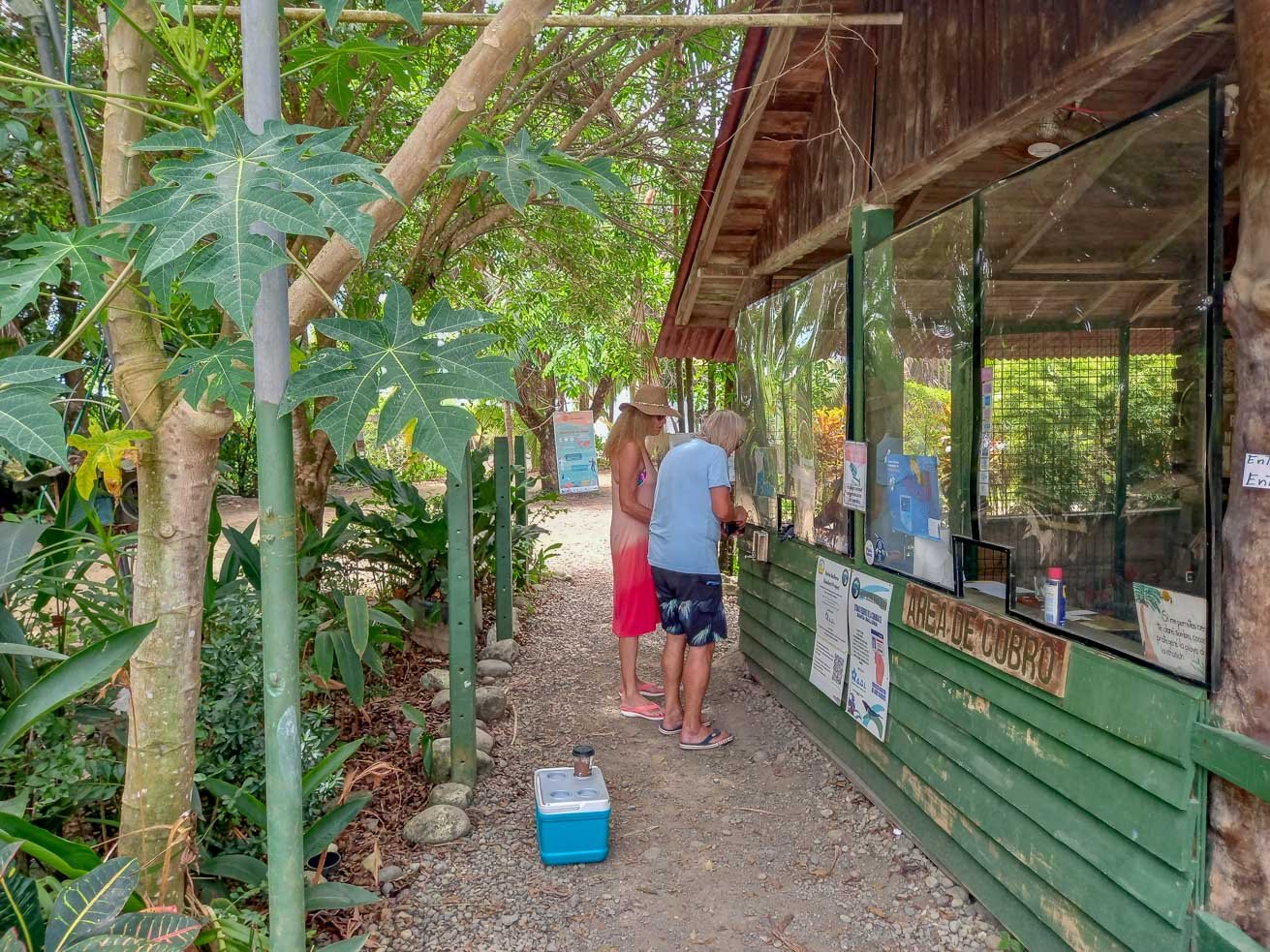
2 – Where are the WHITE SANDS and TURQUOISE waters???
Mysterious & Beautiful Dark Sands
Many imagine tropical lands welcoming with white-sanded beaches and beautiful, bright, blue-turquoise-green waters, this being true for many parts of the Caribbean. And while Costa Rica has a few bright-sanded beaches, most of our sand is dark and often mingled with rocky outcroppings – a result of our volcanic past without which these lands would never have emerged from the cold depths of the ocean just a few short millions of years ago.
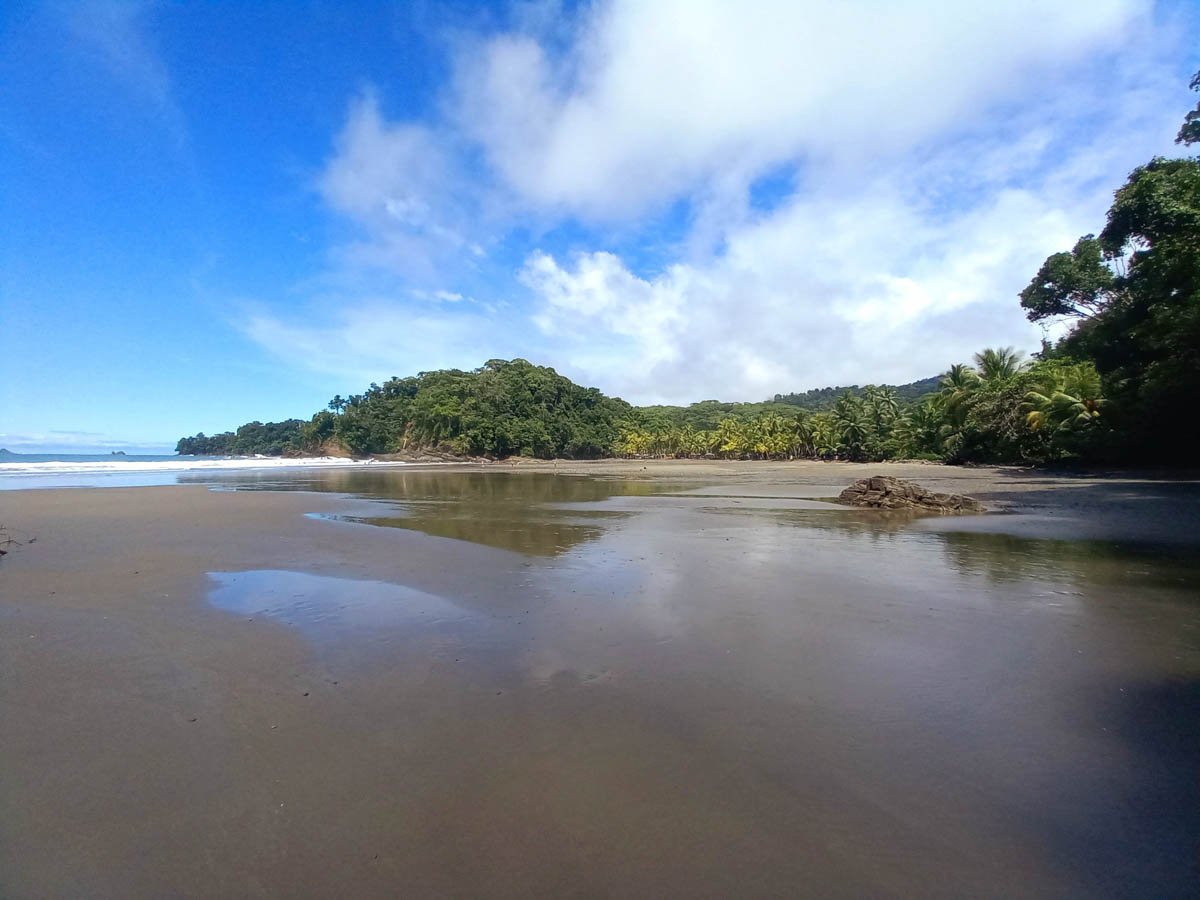
But that is little consolation to those who were expecting to see Bahamas vistas in Costa Rica. I guess there is a lot to say for doing one’s homework before buying the holiday package! We have a different type of beauty along our beaches, a beauty every local and expat is proud of and would never exchange for some generic postcard white-sanded beach!

World-Famous Beaches
Costa Rican beaches are famous around the world – unspoiled, nature immersed, lined by lush jungles, coconut groves and majestic mountains, always warm and welcoming. The dark sand creates a spectacular, exotic contrast which holiday pictures are famous for: blue skies, white clouds, green mountains, foaming waves and, in between, dark and pristine stretches of sand. But we also have beaches of all shades and colors – including golden and pink!
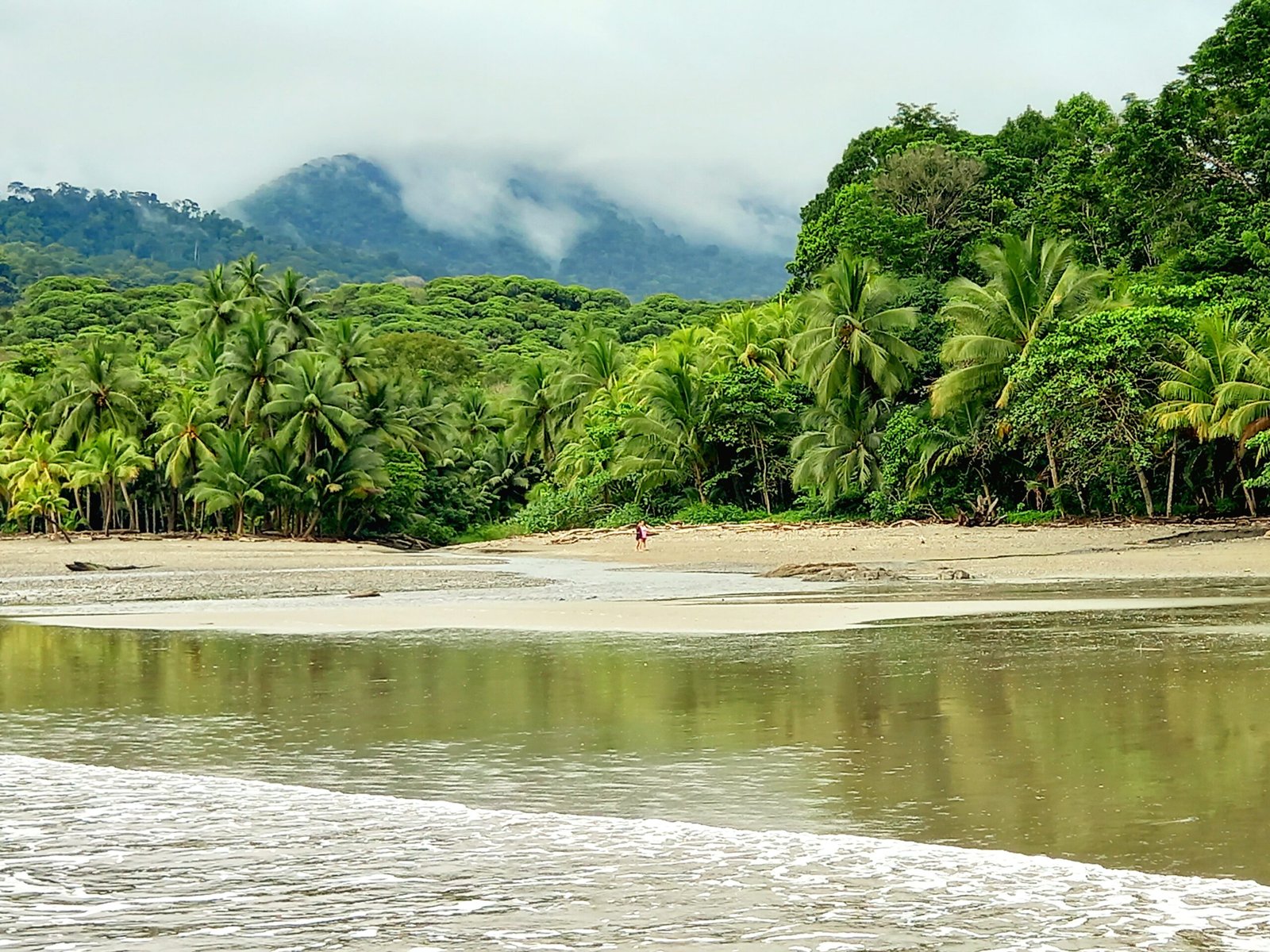

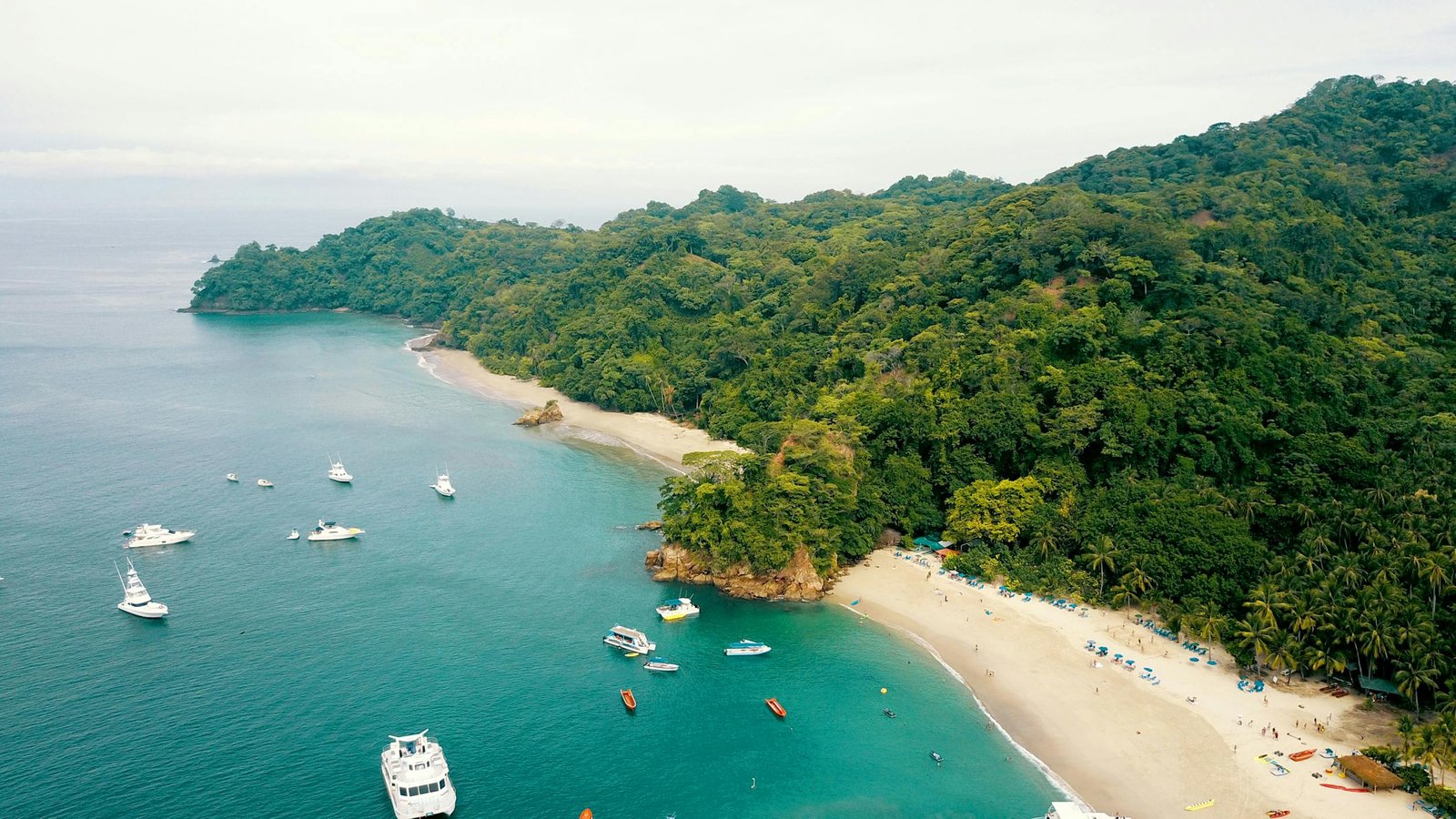
3 – Nature is EVERYWHERE
My friends did not expect to find a Blue Jeans frog in their accommodation garden, or see Toucans frolicking in trees just meters away as they waited for their restaurant meal. Other visitors did not expect to run into flocks of macaws on their way from San Jose airport – asking to pull over to take photos, they thought they hit the jackpot and may not get a glimpse of these magnificent birds again. And local tourists marvel at being able to see multiple Blue Morpho butterflies daily as they traverse the jungle edges of Ojochal, Cinco Ventanas and our local beaches – and many unexpectedly catch a pod of dolphins or whales on a sport fishing trip.
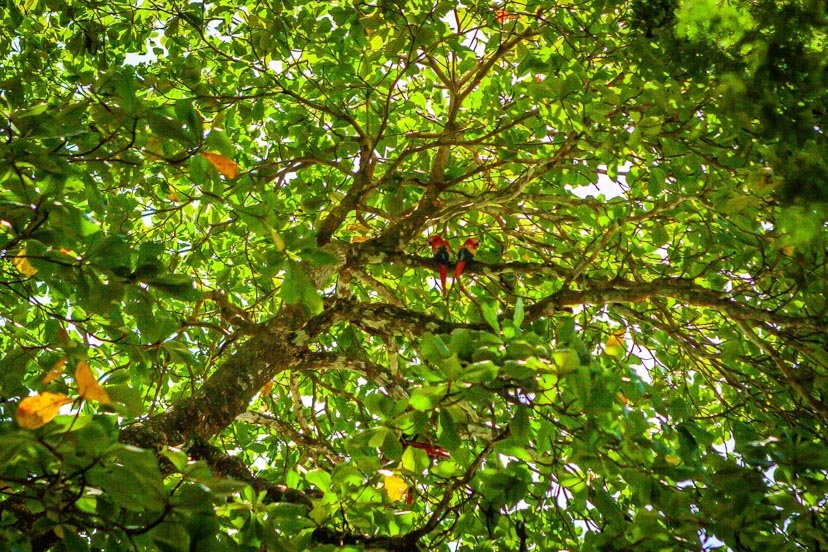
In many countries, nature lives in tightly delineated borders of national parks and nature reserves. In Costa Rica, nature is everywhere – no matter where you are, expect to see monkeys, sloths, toucans, macaws, and other jungle creatures – even in tightly urban areas.

The Line Between Civilization & Nature
Costa Rica protects 28% of its land and 30% of its territorial waters through national parks, reserves, refuges, and conservation areas. These protected zones act as safe havens for wildlife to breed, roam, and re-colonize newly reforested regions. Thanks to decades of successful rewilding efforts—including government-led programs like Payments for Environmental Services (PES)—forest cover has rebounded dramatically, and biodiversity is thriving.
Animals don’t stay confined to the wild. With Costa Ricans showing deep respect and affection for their jungle neighbors, creatures often wander into towns, gardens, and even beachfront resorts. It’s not uncommon to lock eyes with a tapir, anteater, toucan, macaw, quetzal, or coati while sipping morning coffee. Along the coasts, dolphins and sea turtles glide close to shore, sometimes within view of beachgoers.

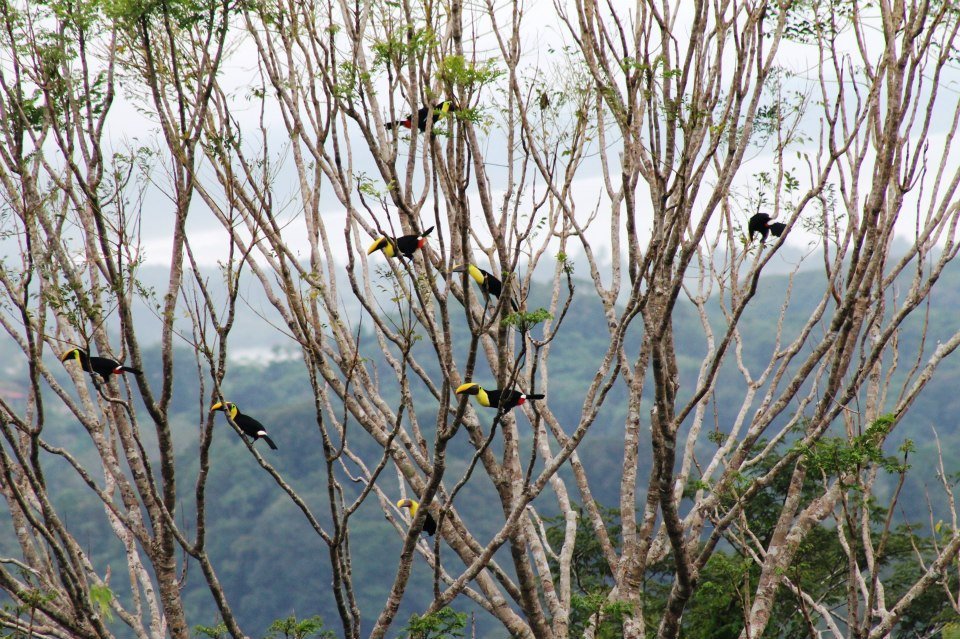
4 – Costa Rica’s days start EARLY and end EARLY
ropical life runs on a steady solar rhythm. In Costa Rica, the sun rises before 6:00am and sets by 6:00pm—twelve hours of daylight and twelve of night, every day of the year. Locals wake early to enjoy the cool mornings and get a head start on work and chores. By 9:00pm, most have called it a day. Expats quickly adapt to this natural schedule, finding it both practical and restorative. Late-night energy exists, but mostly in tourist-heavy areas where nightlife caters to visitors. Outside those zones, the pace slows, the lights dim, and the rhythm of the tropics takes over.

The Sun Rules the Day (And Night)
The Sun Chart for Ojochal reveals a consistent tropical rhythm. Sunrise always happens before 6:00am, and by 6:00pm, daylight fades quickly. In late April, the sun rises around 5:20am and sets near 5:45pm, giving just over twelve hours of daylight. Solar Noon—marked by the red line—occurs at about 11:30am, when the sun reaches its highest point in the sky. The yellow line shows the opposite: the sun’s lowest position beneath the horizon, around 11:30pm, marking the deepest part of the night.
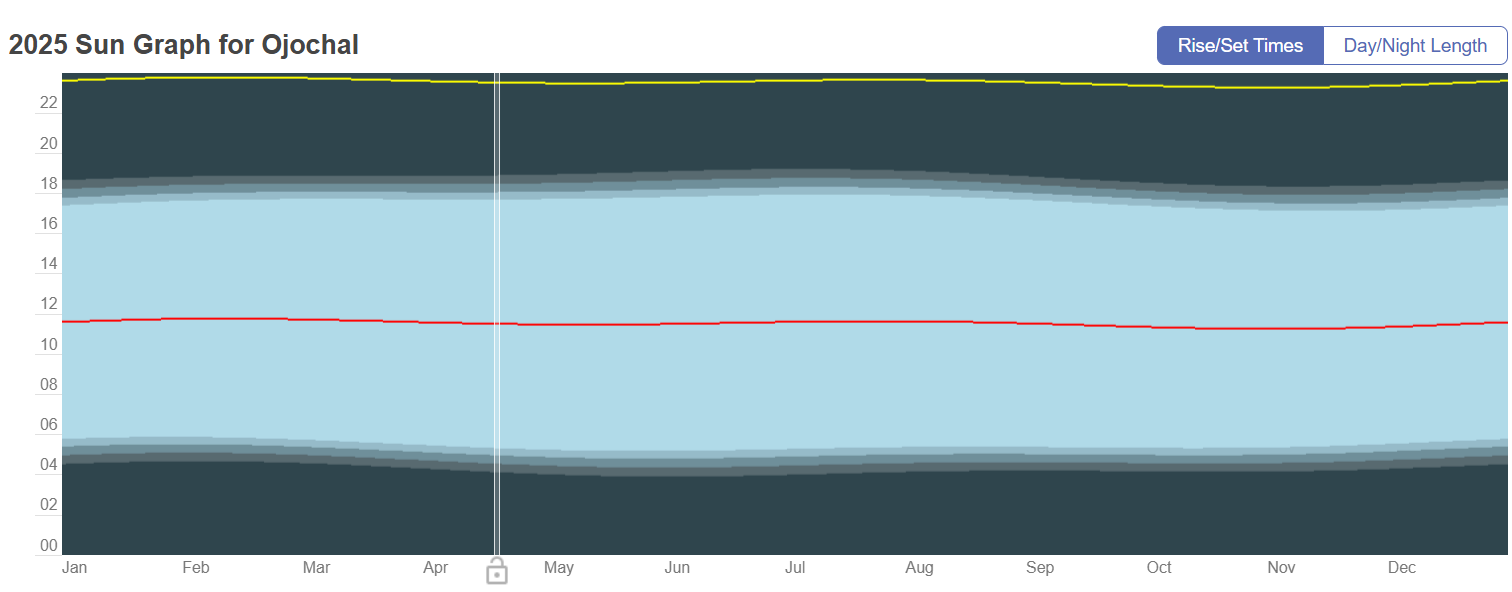
5 – EASTER time STOPS the nation!
Easter in Costa Rica, known as Semana Santa, holds deep meaning for the nearly 75% of Costa Ricans who identify as Christian. The four-day weekend blends solemn religious observance with joyful family traditions. Many attend mass and take part in processions that honor the Passion, Death, and Resurrection of Jesus. Families gather to cook, share meals, and celebrate, while others head to the coast to camp or stay with relatives. Beach towns fill with music, laughter, and community spirit. Yet Good Friday remains a quiet, reverent day marked by prayer and reflection. For those who stay home, the week offers a chance to slow down, reconnect, and honor faith. Semana Santa weaves together devotion, celebration, and cultural pride—making it one of Costa Rica’s most cherished times of year.

A Super-Busy & Buzzing Week!
Semana Santa in Costa Rica brings vibrant celebrations and serious travel challenges. Hotels fill quickly, rental cars become scarce, and tours sell out fast. Highways slow to a crawl as locals head to the coast, and public transport either shuts down or becomes overcrowded. Beaches overflow with families enjoying their time off, and many businesses close for several days. Those that stay open often operate at full capacity. Locals take the entire week off, turning towns into either quiet retreats or packed hotspots. If you want to experience the energy and tradition of Holy Week, plan ahead and embrace the chaos. Otherwise, avoid Easter travel across Costa Rica and much of Latin America.
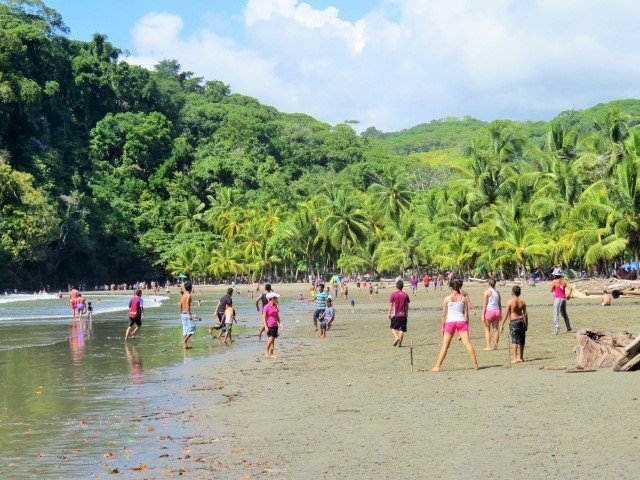
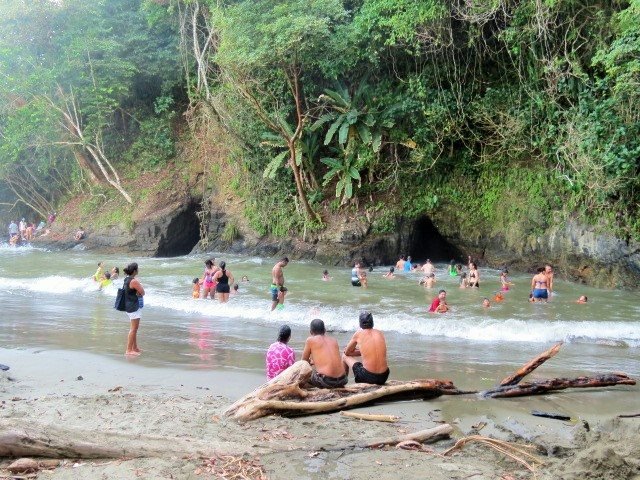
6 – Driving takes time – ALWAYS leave much earlier than you think you should!
Costa Rica has modern four-lane highways that snake along ridges and cross suspension bridges over tumbling river valleys. But it also has shabby National and Secondary Routes that come to a halt at one-way bridges, not to mention smaller & back-country roads that may be covered with potholes and straddle thousand-foot cliffs without a safety barrier in sight.
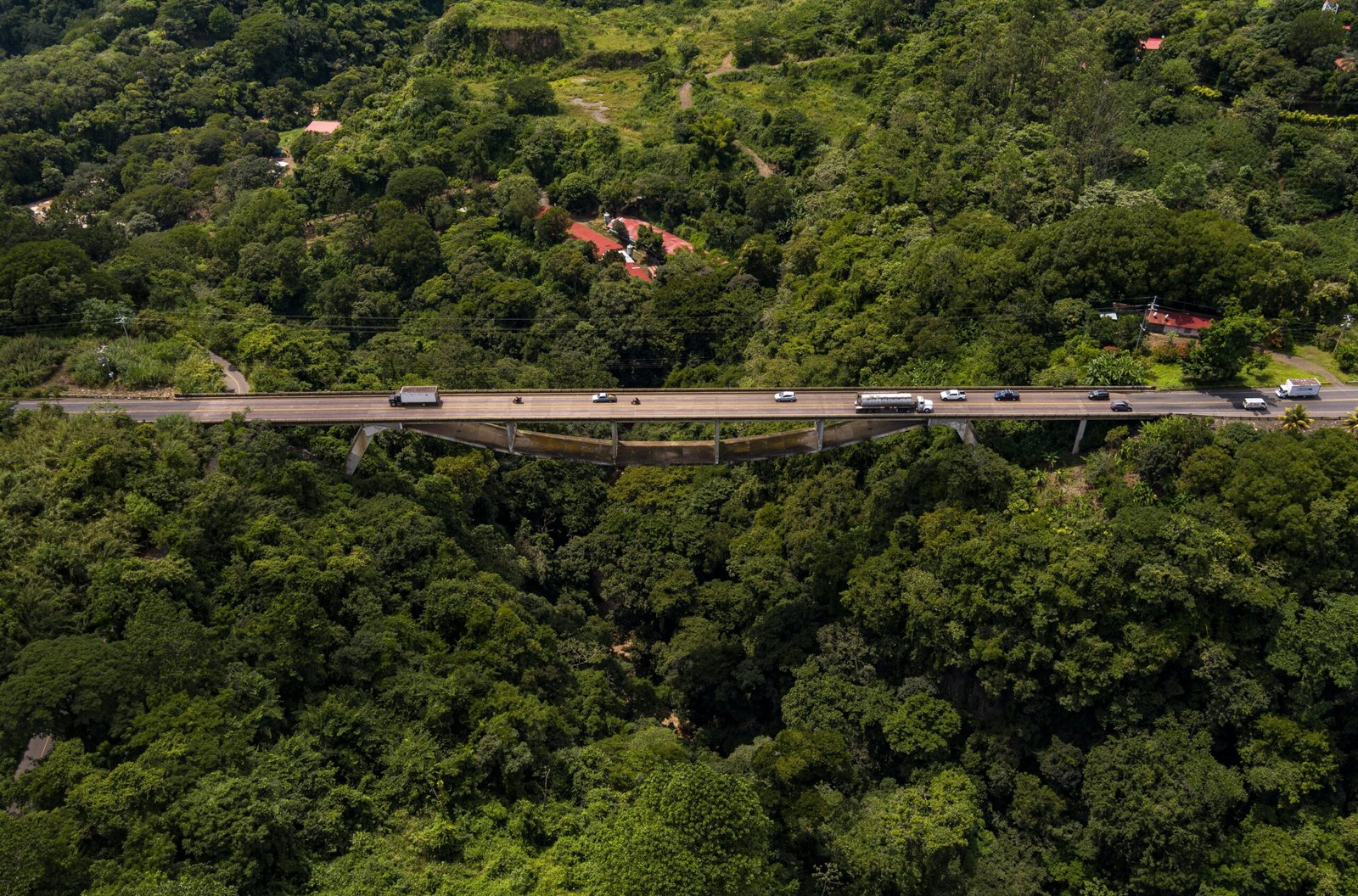
So Much Can Go Wrong!
During the rainy season roads are often closed due to flooding, land slips or tree falls. At other times, construction creates headache-inducing traffic jams (construction season is squeezed into the relatively short dry season). Hilly sections are frequently suffocated by large trucks inching along in no passing zones. So ALWAYS leave plenty of reserve time when driving.

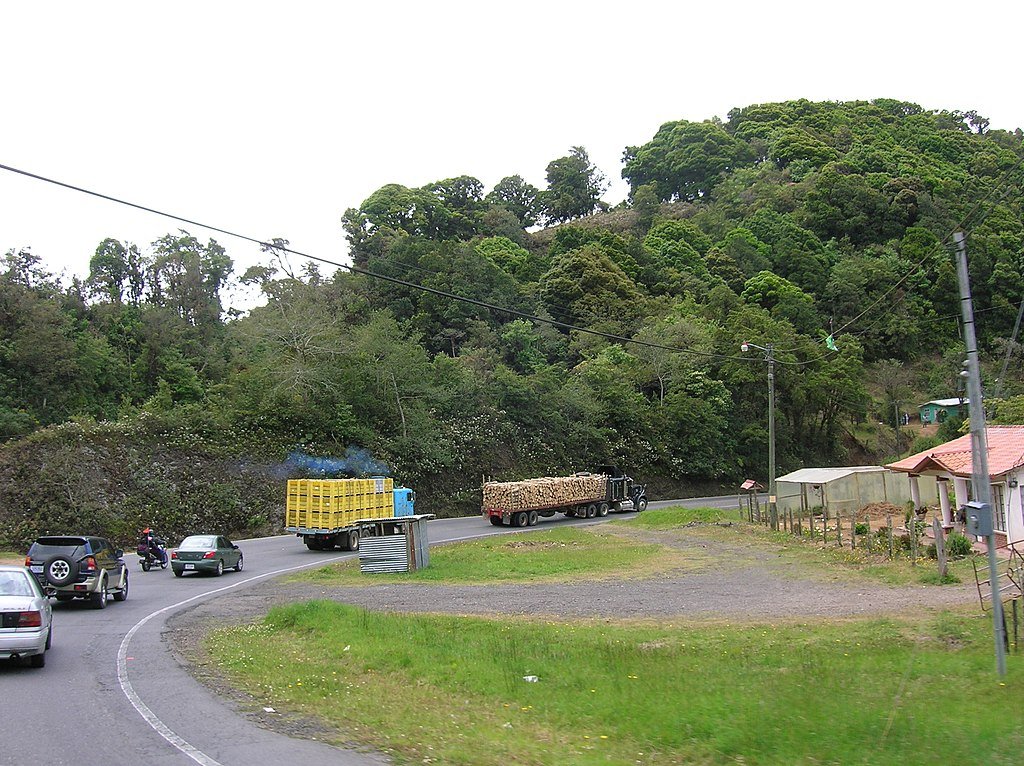
As an example, google will tell you that the drive from San Jose Airport to Uvita (212km) takes 3 hours. From experience, I can say you are lucky to do the drive in 4 hours, and 5-6 hour trips are not at all uncommon. One landslip, accident, construction zone, police checkpoint, bike race, etc. can turn a ‘3 hour drive’ into a half-day expedition.

7 – Few additional and IMPORTANT Costa Rica considerations
Getting Around
- You can use Uber here, in many cities and towns – and it is the best way to get around. I’ve had a scammy experience with a local taxi (that was before Uber) on my way to San Jose airport. No more!
- Public Transport in San Jose can be spotty and confusing – an app called Moovit is highly recommended for clear instructions regarding bus transportation, giving clear steps to get you from A to B.
Payments
- Many places accept credit and bank card payments – but carry cash just in case. You may need it to access public toilets, buy food or trinkets from markets and roadside stalls, leave tips, or pay where electronic payment options are not available or not working (from experience I can confirm a few cases where the restaurants and cafes I was dining at lost power and could not accept electronic payments). The Colon is the local currency – it hovers at about 500 Colones to 1 USD. US Dollars are widely accepted but you may get a bad exchange rate – so in any case, ALWAYS carry backup Colones.
Safety
- While the country is relatively safe, petty crime can be a concern in some areas – touristy hotspots included. So NEVER leave valuables unattended – whether in the car or on the beach. Not even for a few minutes – there are cases of luggage being removed from cars while the owners were away for 2-3 minutes, grabbing a cold drink from a local roadside grocer. Do not wear expensive jewelry, carry brand name handbags, or wear thousand-dollar sneakers – best to leave these items in your home country anyways. Follow all common sense precautions – Google is your friend here, have a look before you set off.
Weather & Climate
- Pack for FOUR seasons – sudden rainstorms can pop up even during the drier months, and higher elevation cloud forests, volcanoes and plateaus can get very chilly.
Water
- Be safe in the water. Rip currents take way too many lives every year, of both locals and visitors. Know how to spot a rip current, how to read lifeguard flags, what to do if caught in a rip, and review all other basic water safety rules. In our Costa Ballena area, there are numerous weekly posts about people perishing or getting in trouble in the water.
- With the potential exception of rural settlements and small Caribbean & Osa Peninsula towns, tap water is considered safe to drink throughout Costa Rica. BUT you never know, and as your vacation time is precious, think about bottled water. It is cheap and widely available.
As they say, “You’re Not In Kansas Anymore”! Costa Rica has a few quirks up her sleeve, some wonderful and some weary of consideration. But the expats who live here don’t even notice them anymore – they have all become a fabric of the Pura Vida lifestyle. And many tourists fall rightly in love with our beautiful Costa Ballena! We invite you to browse the local properties available in our area, knowing that RE/MAX WE SELL PARADISE is your trusted partner in the South Pacific corner of Costa Rica.



